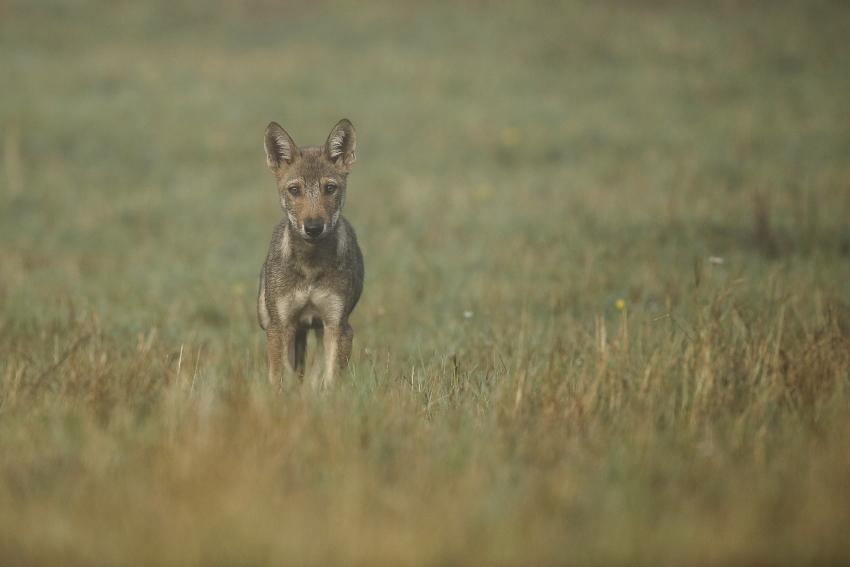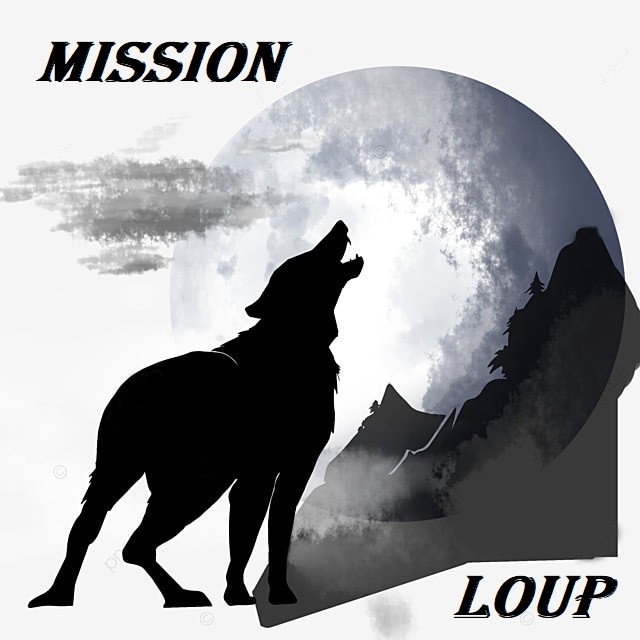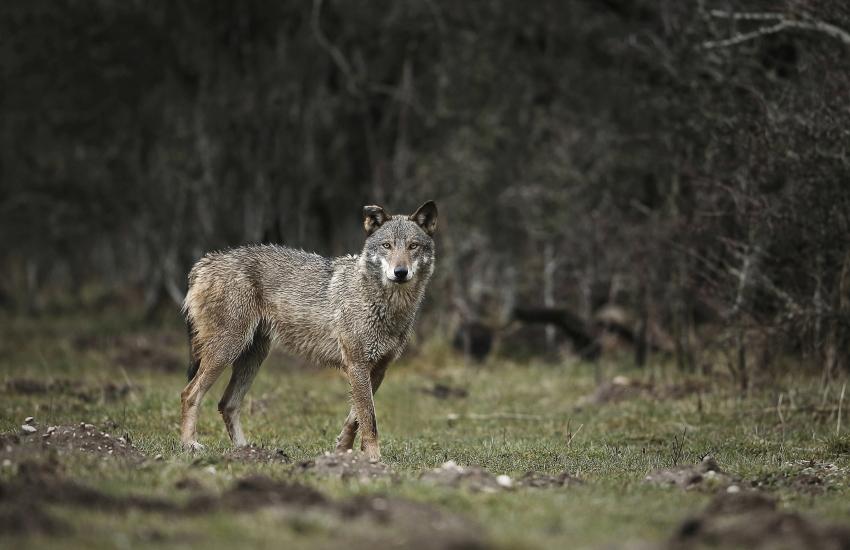Wolf reproduction is carefully regulated within the pack. The breeding pair is usually the only one to reproduce. The breeding season generally occurs between February/March (mating) and early May (whelping), with gestation lasting around 63 days. Females give birth to a litter of 3 to 6 cubs on average, the number varying according to available resources, who are born blind and deaf and are totally dependent on their mothers and the pack for food and protection. For the first 2-3 weeks after birth, the breeding male is responsible for feeding the female, who only leaves the den to quench her thirst. Parental care in wolves is collective, with all pack members sharing responsibility for raising and protecting the cubs. This instinctive behavior promotes the survival of the young by ensuring adequate nutrition, education in hunting techniques and socialization within the pack, thus preparing the next generation of efficient predators.
As soon as autumn arrives, between late September and early October, the cubs begin to accompany the pack on hunts, observing and learning more experienced hunting techniques through imitation. Between the ages of 1 and 3, on average between 9 and 24 months, young wolves, called "yearlings" for the first year and then subadults, leave their original pack to find a new territory and partner, in order to form a new pack. They may also join another pack, taking the place of a fallen or missing breeder. In some cases, often as a result of over-regulation of numbers (legal shooting, hunting) at regional level, a subadult may even move away, mate and return to his original pack, enabling the pack to have two annual reproductions and attempt to make up for the losses suffered. These dispersal behaviors are also essential for ensuring genetic diversity, by enabling reproduction between unrelated individuals from different regions. This reinforces genetic resilience and adaptability to environmental change.
This dispersal phenomenon is, according to specilists, further dictated by sexual maturity, each wolf's personality and the available prey pool, all of which are determining factors. Individuals with a strong character, seeking to gain the upper hand over the breeding pair, will either choose to leave the pack on their own at breeding time (when the breeding male and female are more intolerant of subadults, and conflicts are more frequent) or be hunted because they disrupt the pack's equilibrium.
We would also like to point out that if lone wolves are seen at certain times of the year, often no more than once or twice, near villages or chalets, this is easy to explain. The first reason is simple : lone wolves are dispersers, probably young, inexperienced and unfamiliar with the territory they're in. They simply try to cross it (valleys, riverbanks, plains, etc.). They come into contact with human civilization against their will, and are sometimes even disturbed by hikers or other leisure pursuits upstream. But there's also another very clear explanation for these daytime encounters, apart from the fact that we sleep at night : as any disperser knows, his life could end quickly if he crosses the territory of a pack and comes face to face with it. As wolves hunt and travel mainly at night, the disperser chooses to cross the territory during the day, thus avoiding running into the existing pair or pack ! This minimizes the risk of potentially fatal conflicts. This behavior has nothing whatsoever to do with any "loss of fear of human" in these circumstances. We need to base our assessments not on personal, anthropomorphic impressions & opinions, but on ethology ! This branch of science, which studies the behavior of living beings, enables us to better understand why an animal behaves as it does, depending on his environment, situations, etc. It gives us a better understanding of living species.
The dispersal record is held by a wolf named "Slava", who left the Carpathians and settled in Spain (around 3,500 kilometers). The second wolf with an impressive dispersal record is M237 : this young male born in the Stagias pack (Grisons) reached the border of Slovakia, where he was unfortunately shot dead by a poacher, a 9-year-old boy accompanying his father ! He was equipped with a radio collar (GPS collar) which recorded his incredible journey, which covered 1,927 kilometers (on the ground). According to studies and observations, females disperse less far and often settle close to their birth pack. This is the case in Valais and the Jura Vaudois. The world of wolves is a very complex one, and we'd like to make this clear : anyone who thinks he knows everything, or who believes he's mastered his subject, is very naive, as this will certainly never be possible !
But before settling into a new territory, young wolves can undertake what we call exploratory "excursions" over short distances. These excursions enable them to assess the food resources available, the presence of other competing packs and the general quality of the habitat. The aim is also to teach them to hunt and live on their own, which will give them valuable experience for the time they disperse. During this exploration phase, young wolves explore their pack's territory or the surrounding area on their own. They may leave for a few hours, days or even weeks, covering considerable distances. Whether on excursions or dispersals, young wolves may have agonistic interactions with other wolves/packs, especially when crossing their territories. In rare cases, this can even lead to death. Since 1998, only one wolf has been reported to have been killed by his congeners, found dead in Graubünden in winter 2021. But other similar cases could exist, without the bodies having been found.
It's important to know that wolf mortality is very high : 40-50% in the first year of life (due to genetic weakness, malformation, accidents or other predators), rising to 60-80% in the second and third years (due to traffic or natural accidents, poaching, legal shooting or intraspecific conflicts ). In the end, wolves have a life expectancy of only 5 to 7 years in the wild. In Switzerland, the record is currently held by F07, the original breeding female of the first wolf pack in Calanda (Grisons). She had to be slaughtered because of deteriorating health (the autopsy revealed a lung tumour) at the age of 13-14. But, as you can imagine, this case is extremely rare, especially now that preventive regulation has completely changed the game through the arbitrarily shooting of individuals, without taking into account their age or their role in the pack. The Canis lupus species already regulates itself, if only through natural and human mortality (without shooting) and the eventual absence of reproduction when prey runs out or territories become saturated, thus preventing the famous exponential growth, which is much talked about but does not exist in nature, especially where predators are concerned !

Photo : F. Bruggmann










